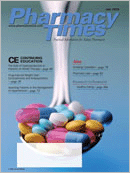Publication
Article
Pharmacy Times
HYPERTENSION WATCH
Monitoring BP at Home Can Help Direct Treatment
According to researchers in Finland, blood pressure (BP) monitoring done at home is as accurate as 24-hour ambulatory monitoring done in the doctor's office. Therefore, either one can be used to adjust medications taken to lower BP, if necessary.
In an unprecedented study, researchers enrolled 98 patients with untreated high BP and randomly assigned them to either routine home BP monitoring or ambulatory monitoring. Every 6 weeks, average home BP measurements or one 24-hour session of ambulatory BP monitoring was used to adjust the antihypertensive treatments to bring the patients'BP levels down to normal ranges. During 6 months of follow-up, the researchers found that BP had decreased significantly in both groups, and there were no significant differences between the 2 methods used.
The researchers noted that the home BP monitoring option "is more convenient and better accepted by the patients for long-term use and also less costly compared to ambulatory monitoring."They also point out, however, that it is vital that the patients use the proper equipment and are thoroughly trained by their health care provider in the correct use of the equipment in order to obtain an accurate reading. The findings were reported in the May 2006 edition of the American Journal of Hypertension.
Certain BP Meds Can Reduce Diabetes Risk in Hispanics
Hispanic patients with high blood pressure (BP) have traditionally been treated with a combination of calcium antagonists and angiotensin-converting enzyme (ACE) inhibitors. A new study has found that this mix of medicines has an added benefit in these patients?it lowers the risk of developing diabetes. The results of the study were published in the May 2006 issue of the American Heart Journal.
Researchers at the University of Florida followed ~8000 Hispanic patients from 14 different countries for 2 to 5 years. The patients were randomly assigned either the calcium antagonist verapamil or the beta-blocker atenolol. Both groups also could receive the ACE inhibitor trandolapril as well as the diuretic hydrochlorothiazide. Overall, the patients in the verapamil group were 15% less likely to develop diabetes, compared with those taking atenolol, and researchers found that the drop correlated with verapamil being used with trandolapril.
Researchers will continue to analyze DNA they have collected from the Hispanic study participants to evaluate the role of genetics, as well as environmental factors such as diet, on the development of diabetes in this population.
High BP in Men Might Be a Family Affair
A recent study showed that men whose parents had high blood pressure (BP) were at greater risk of developing it themselves than men whose parents'BP was normal. Doctors hail this result as an important finding, because the ability to spot patients at a heightened risk for high BP "enables one to intervene early in life by means of diet and lifestyle changes, resulting in a potential decrease in the incidence of hypertension." The findings were published in the May 2006 issue of the American Journal of Hypertension.
Researchers at the University of California at Los Angeles studied 220 otherwise healthy men and women between 22 and 50 years old who worked full-time in or around Los Angeles. The participants provided information on family medical history and completed two 24-hour ambulatory BP sessions. The researchers found that men with 2 hypertensive parents had higher BP readings than men whose parents'BP was normal. Men with one parent with high BP had "intermediate" levels. In women, however, the BP increases were not associated with family history, but rather age was a factor, as many women become more susceptible to hypertension after menopause.
Enlarged Heart Not Always a Danger Sign
Usually, an enlarged heart is a signal of cardiac trouble. The cause of the enlargement, however, is critical in determining whether any heart disease is present. In fact, the researchers investigating the ailment found that the type of stress that causes the enlargement plays a bigger role than the length of the stress itself. The findings appear in the June 1, 2006, issue of the Journal of Clinical Investigation.
The researchers looked at different types of stress, such as stress from exercise and so-called pathological stress, that cause damage to the heart. High blood pressure is one type of pathological stress. Even though both types of stress can be harmful, the way the heart responds to exercise is very different from the reaction to high blood pressure. Exercise is helpful, and the heart adapts to it in a beneficial way, as in the case of endurance runners. By contrast, someone with long-standing hypertension also can develop an enlarged heart, but it can become dilated and heart failure can develop.
The study addressed a common theory on why cardiac stress induced by exercise does not produce the negative effects of stress caused by high blood pressure?that the stress from exercise is intermittent, whereas the stress from hypertension is continuous.










